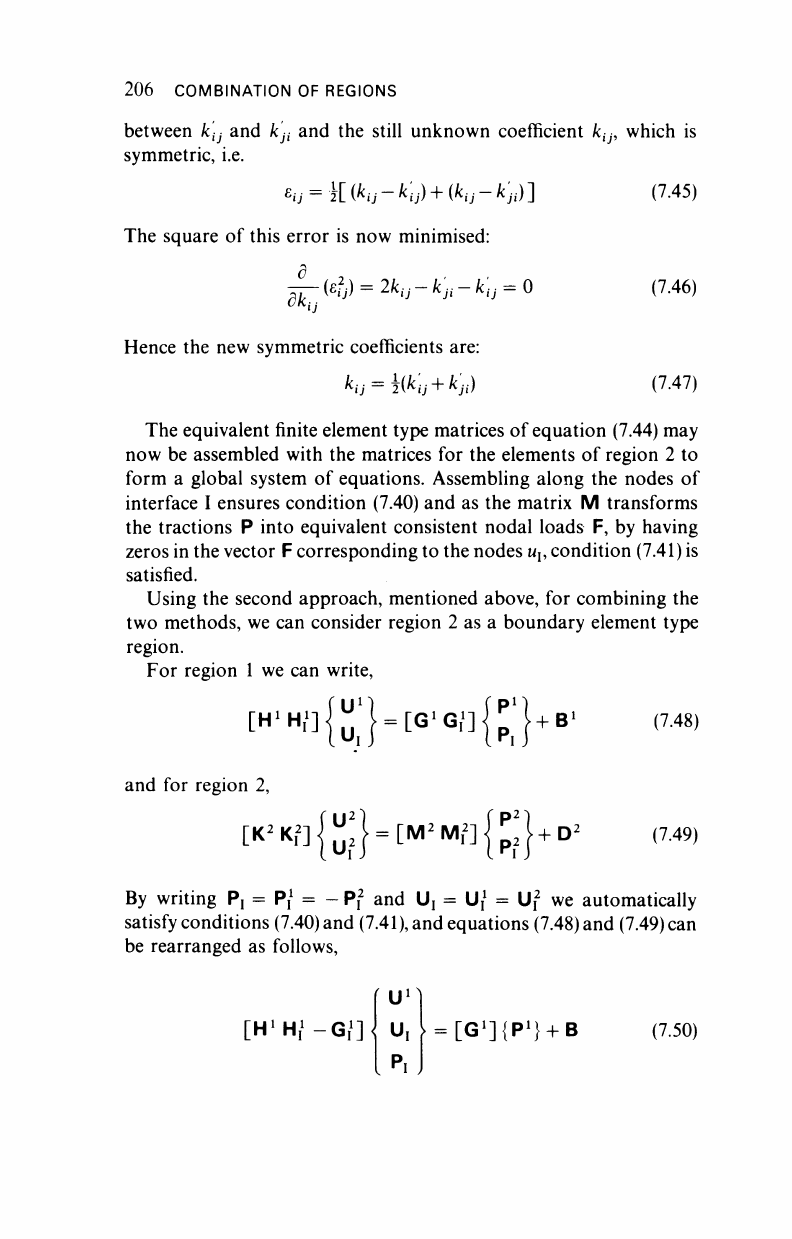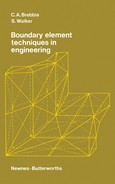
206 COMBINATION OF REGIONS
between k'
{j
and k'
}i
and the still unknown coefficient k
ip
which is
symmetric, i.e.
The square of this error is now minimised:
dk
;
-(£?.) =
2^-^,-^
= 0
Hence the new symmetric coefficients are:
Kj
=
2(^0 + */i)
(7.45)
(7.46)
(7.47)
The equivalent finite element type matrices of equation (7.44) may
now be assembled with the matrices for the elements of region 2 to
form a global system of equations. Assembling along the nodes of
interface I ensures condition (7.40) and as the matrix M transforms
the tractions P into equivalent consistent nodal loads F, by having
zeros in the vector F corresponding to the nodes u
h
condition (7.41) is
satisfied.
Using the second approach, mentioned above, for combining the
two methods, we can consider region 2 as a boundary element type
region.
For region 1 we can write,
[H'H^JjVtG'G.
1
]
and for region 2,
[K
2
K,
2
]
u
2
u,
2
[M
2
M
2
]
P
1
+ B
1
+ D
2
(7.48)
(7.49)
By writing P, = P,
1
= - P,
2
and U, = U,
1
= U,
2
we automatically
satisfy conditions (7.40) and
(7.41),
and equations (7.48) and
(7.49)
can
be rearranged as follows,
[H'HJ-G,
1
]
U
1
"
Pi
= [G
1
]{P
1
} + B
(7.50)
..................Content has been hidden....................
You can't read the all page of ebook, please click here login for view all page.
